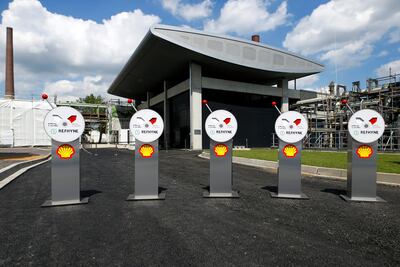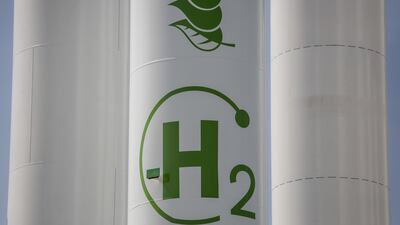The production of low-emission hydrogen globally can grow massively to reach 38 million tonnes per year by 2030 if all announced projects are realised.
Lagging policy support and rising cost pressures however are putting investment plans for low-emissions hydrogen at risk, according to the International Energy Agency.
"Equipment and financial costs are increasing, putting projects at risk and reducing the impact of government support for deployment," the Paris-based agency said in its latest report Global Hydrogen Review 2023.
The agency said hydrogen use globally reached 95 million tonnes in 2022, an increase of nearly 3 per cent compared with the previous year.
"There was strong demand growth in all major consuming regions except Europe, which suffered a hit to industrial activity due to the sharp increase in natural gas prices."
However, uptake of low emissions hydrogen remains very limited, accounting for only 0.6 per cent of total hydrogen demand, it added.
It further noted that inflation is "increasing capital and financial costs, threatening the bankability of projects across the entire hydrogen value chain, which are highly capital intensive".
“For hydrogen produced from renewable electricity, for example, an increase of 3 percentage points in the cost of capital could raise total project cost by nearly one-third. Several projects have revised their initial cost estimates upwards by up to 50 per cent.”
The agency said the number of announced projects for low emissions hydrogen continues to expand rapidly, while more than 40 countries worldwide have set out national hydrogen strategies to date.
"Yet, installed capacity and volumes remain low as developers wait for government support before making investments. As such, low-emissions hydrogen still accounts for less than 1 per cent of overall hydrogen production and use."
Hydrogen, which can be produced from renewable energy and natural gas, is expected to become a critical fuel as economies and industries transition to a low-carbon world.
It comes in various forms, including blue, green, and grey. Blue and grey hydrogen are produced from natural gas, while green is derived from splitting water molecules through electrolysis.
French investment bank Natixis estimates that investment in hydrogen will exceed $300 billion by 2030.
“We have seen incredible momentum behind low-emissions hydrogen projects in recent years, which could have an important role to play in energy-intensive sectors such as chemicals, refining and steel,” IEA executive director Fatih Birol said.
“But a challenging economic environment will now test the resolve of hydrogen developers and policymakers to follow through on planned projects. Greater progress is needed on technology, regulation and demand creation to ensure low-emissions hydrogen can realise its full potential.”
The agency stressed the importance of government support for the new projects but said slow implementation of support schemes is delaying investment decisions.
“Governments have announced numerous programmes to support first movers, but in most cases, these programmes are not yet implemented, or the funds have not yet been made available,” it said.

“This is hindering investment decisions for planned projects whose economic feasibility depends on public support, a situation that has worsened due to the impacts of inflation,” the agency said.
It urged governments to “urgently” implement these programmes and make funding available to boost production of hydrogen.
The IEA underlined bolder action to stimulate demand for low-emission hydrogen with governments taking the lead to implement policies and regulations that encourage action in the private sector for the adoption of low-emission hydrogen in existing applications.
“Governments should work to make licencing and permitting processes as efficient as possible and to improve coordination among different authorities involved in the process, to minimise their significant impact on project lead times, particularly for certain infrastructure developments, such as new pipelines, underground storage and import/export terminals.”
Governments should also take action with interventions that respond to near-term financial risks including loan guarantees, export credit facilities or public equity investment in projects, to help project developers that are struggling with increases in costs for equipment and capital, IEA added.



